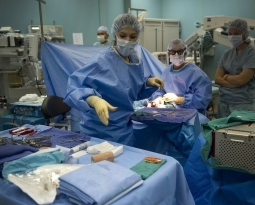Oklahoma Patent of the Month – December 2021
Well treatments usually involve flowing treatment fluids, gels and slurries through a wellbore and into the open perforations of the well. These activities are used to stimulate an operation by inducing a fracture and usually use a slurry of water and some proponent (eg. sand). However, these activities can become tricky when dealing with multiple treatment zones. It might become difficult to maintain a constant and sufficient flow velocity to achieve the desired fractures or to prevent settling of the treatment product. For instance, if the treatment involves the use of sand but the flow isn’t fast enough, the sand will just settle along the ground.
Thru Tubing Solutions, Inc. has designed a system to improve these multi-zone well treatment processes. The company consists of experts in downhole operations. They have been providing solutions in both design and construction at well sites since 1997. Through innovative equipment, they have advanced the industry in productivity and safety.
With experience in the industry, the company decided the best solution to the limitations of multi-zone treatments is to isolate the zones from each other. When the zones are intersected by a wellbore, they can be isolated using a plug assembly. This separates the well into smaller segments rather than a single large fracturing operation. The smaller fracturing lengths increase the average fluid velocity naturally.
This allows treatment of each zone separately without increasing the time or labor involved. In their design, one zone is treated by flowing the treatment fluid through the wellbore and into the treatment zone. Once the desired amount of treatment fluid is introduced, the flow path is then blocked, increasing pressure in the wellbore. This increased pressure opens the plug assembly and allows the fluid to flow into the next zone. This process ensures that each zone always has the required velocity to properly treat and fracture the well, without excessively increasing the amount of fluid or time needed.
Are you developing new technology for an existing application? Did you know your development work could be eligible for the R&D Tax Credit and you can receive up to 14% back on your expenses? Even if your development isn’t successful your work may still qualify for R&D credits (i.e. you don’t need to have a patent to qualify). To find out more, please contact a Swanson Reed R&D Specialist today or check out our free online eligibility test.
Who We Are:
Swanson Reed is one of the U.S.’ largest Specialist R&D tax advisory firms. We manage all facets of the R&D tax credit program, from claim preparation and audit compliance to claim disputes.
Swanson Reed regularly hosts free webinars and provides free IRS CE and CPE credits for CPAs. For more information please visit us at www.swansonreed.com/webinars or contact your usual Swanson Reed representative.

















